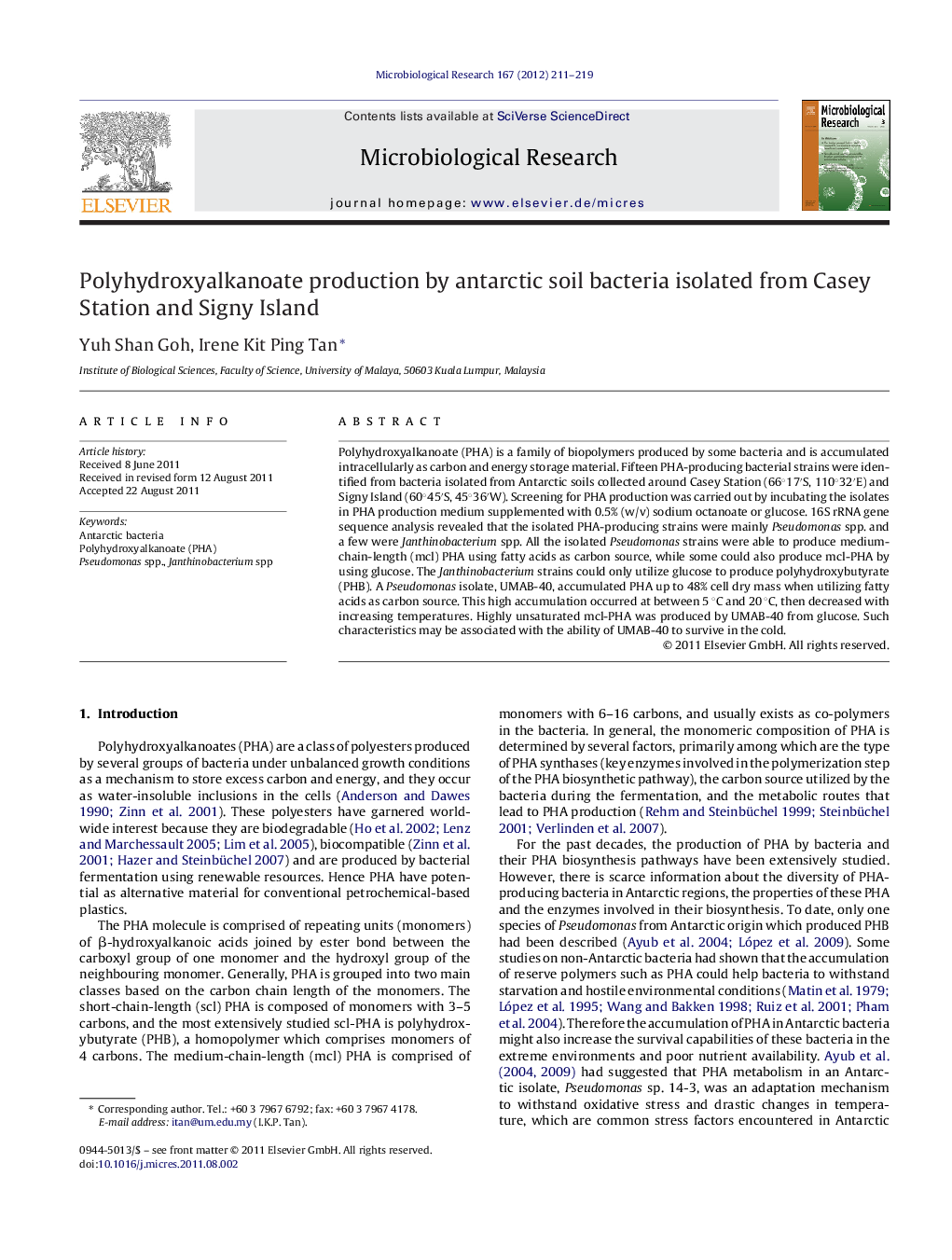| کد مقاله | کد نشریه | سال انتشار | مقاله انگلیسی | نسخه تمام متن |
|---|---|---|---|---|
| 2092661 | 1081807 | 2012 | 9 صفحه PDF | دانلود رایگان |

Polyhydroxyalkanoate (PHA) is a family of biopolymers produced by some bacteria and is accumulated intracellularly as carbon and energy storage material. Fifteen PHA-producing bacterial strains were identified from bacteria isolated from Antarctic soils collected around Casey Station (66°17′S, 110°32′E) and Signy Island (60°45′S, 45°36′W). Screening for PHA production was carried out by incubating the isolates in PHA production medium supplemented with 0.5% (w/v) sodium octanoate or glucose. 16S rRNA gene sequence analysis revealed that the isolated PHA-producing strains were mainly Pseudomonas spp. and a few were Janthinobacterium spp. All the isolated Pseudomonas strains were able to produce medium-chain-length (mcl) PHA using fatty acids as carbon source, while some could also produce mcl-PHA by using glucose. The Janthinobacterium strains could only utilize glucose to produce polyhydroxybutyrate (PHB). A Pseudomonas isolate, UMAB-40, accumulated PHA up to 48% cell dry mass when utilizing fatty acids as carbon source. This high accumulation occurred at between 5 °C and 20 °C, then decreased with increasing temperatures. Highly unsaturated mcl-PHA was produced by UMAB-40 from glucose. Such characteristics may be associated with the ability of UMAB-40 to survive in the cold.
Journal: Microbiological Research - Volume 167, Issue 4, 20 April 2012, Pages 211–219